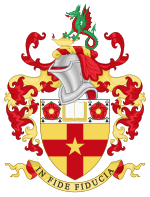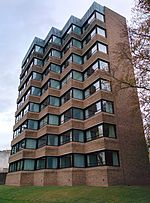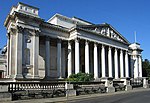Fen Causeway, Cambridge
Bridges across the River CamBridges in CambridgeEngland road stubsStreets in CambridgeTransport in Cambridge ... and 1 more
Use British English from December 2016

Fen Causeway is a link road in the city of Cambridge, United Kingdom, constructed in the mid-1920s to ease the pressure on Silver Street. It forms part of the A1134 ring road. It links Newnham Road and Trumpington Road and spans the River Cam with Sheep's Green to the south and Coe Fen to the north. There is little residential development on this road.As indicated by the road's name, prior to its construction this was a predominantly wild fen area, crossed only by Coe Fen Lane, the predecessor to the current road.
Excerpt from the Wikipedia article Fen Causeway, Cambridge (License: CC BY-SA 3.0, Authors, Images).Fen Causeway, Cambridge
The Fen Causeway, Cambridge Newnham
Geographical coordinates (GPS) Address Nearby Places Show on map
Geographical coordinates (GPS)
| Latitude | Longitude |
|---|---|
| N 52.197 ° | E 0.117 ° |
Address
The Fen Causeway
CB2 1PZ Cambridge, Newnham
England, United Kingdom
Open on Google Maps










